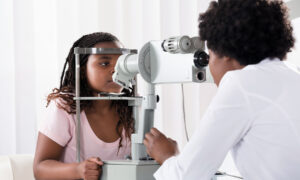June 6, 2019
Thanh Pham, MD
Ophthalmologist, Hai Yen Eye Care
Research Intern, Brien Holden Vision Institute
Presently a number of optical, pharmaceutical and environmental-based strategies are available to slow progression of myopia. The reported evidence of these interventions is generally sound and based on peer reviewed publications and indicate the effectiveness of many of these strategies for slowing myopia. However, determination of interventions that are more effective than others is difficult, as more often than not only a single intervention is assessed in a clinical trial, making it impossible to compare different types of interventions.
In 2016, Huang and co-authors used a statistical approach called “net-work meta-analysis” that allowed for comparisons between different types of myopia control interventions even though they were not compared directly in a clinical trial. Initially they conducted a comprehensive search of all databases and of the 2435 records identified, they finally chose 30 randomised clinical trials (RCTs) involving children and conduced for at least 1 year for inclusion in the analysis. A direct head-to–head comparison was conducted using random effects model and heterogeneity assessed. A Bayesian random effects network meta-analysis was conducted and treatments were ranked based on relative effects compared to placebo or standard spectacles.
The analysis found: good effects for myopia control with all doses of atropine (high, moderate and low); moderate effects with pirenzepine, orthokeratology, peripheral defocus modifying contact lenses, cyclopentolate, and prismatic bifocal spectacle lenses; weak effects with progressive addition spectacle lenses, bifocal spectacle lenses, peripheral defocus modifying spectacle lenses and more outdoor time and no effect with rigid gas-permeable contact lenses, soft contact lenses, undercorrected single vision spectacle lenses, and timolol.
The limitations of this analysis are that they were mostly indirect comparisons, included some wide variations in the reported trial populations, for example, age and also there was lack of sufficient data for some treatments. Notwithstanding these limitations, the article highlights the various strategies employed for myopia control and more importantly, indicates the effectiveness of many of these options for slowing myopia.
Purpose
To determine the effectiveness of different interventions to slow down the progression of myopia in children.
Methods
We searched MEDLINE, EMBASE, Cochrane Central Register of Controlled Trials, World Health Organization International Clinical Trials Registry Platform, and ClinicalTrials.gov from inception to August 2014. We selected randomized controlled trials (RCTs) involving interventions for controlling the progression of myopia in children with a treatment duration of at least 1 year for analysis.
Main Outcome Measures
The primary outcomes were mean annual change in refraction (diopters/year) and mean annual change in axial length (millimeters/year).
Results
Thirty RCTs (involving 5422 eyes) were identified. Network meta-analysis showed that in comparison with placebo or single vision spectacle lenses, high-dose atropine (refraction change: 0.68 [0.52–0.84]; axial length change: −0.21 [−0.28 to −0.16]), moderate-dose atropine (refraction change: 0.53 [0.28–0.77]; axial length change: −0.21 [−0.32 to −0.12]), and low-dose atropine (refraction change: 0.53 [0.21–0.85]; axial length change: −0.15 [−0.25 to −0.05]) markedly slowed myopia progression. Pirenzepine (refraction change: 0.29 [0.05–0.52]; axial length change: −0.09 [−0.17 to −0.01]), orthokeratology (axial length change: −0.15 [−0.22 to −0.08]), and peripheral defocus modifying contact lenses (axial length change: −0.11 [−0.20 to −0.03]) showed moderate effects. Progressive addition spectacle lenses (refraction change: 0.14 [0.02–0.26]; axial length change: −0.04 [−0.09 to −0.01]) showed slight effects.
Conclusions
This network analysis indicates that a range of interventions can significantly reduce myopia progression when compared with single vision spectacle lenses or placebo. In terms of refraction, atropine, pirenzepine, and progressive addition spectacle lenses were effective. In terms of axial length, atropine, orthokeratology, peripheral defocus modifying contact lenses, pirenzepine, and progressive addition spectacle lenses were effective. The most effective interventions were pharmacologic, that is, muscarinic antagonists such as atropine and pirenzepine. Certain specially designed contact lenses, including orthokeratology and peripheral defocus modifying contact lenses, had moderate effects, whereas specially designed spectacle lenses showed minimal effect.
[1]1. Huang, J., et al., Efficacy Comparison of 16 Interventions for Myopia Control in Children: A Network Meta-analysis. Ophthalmology, 2016. 123(4): p. 697-708.











